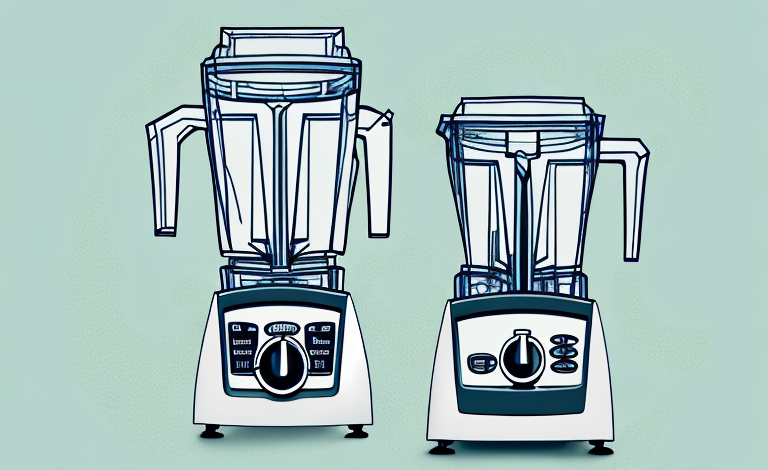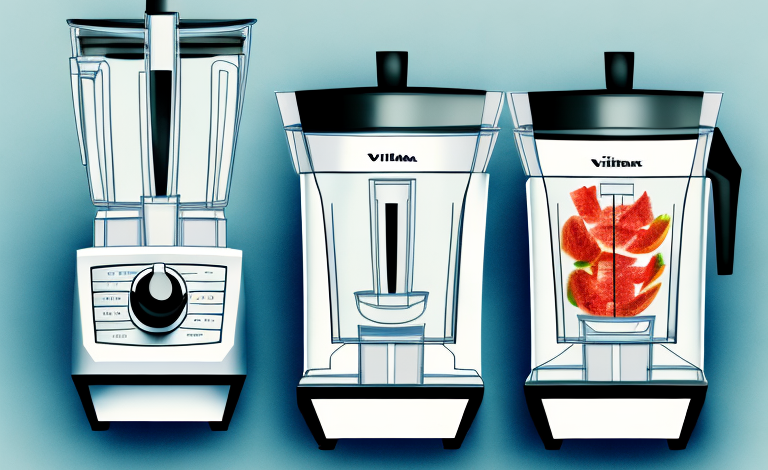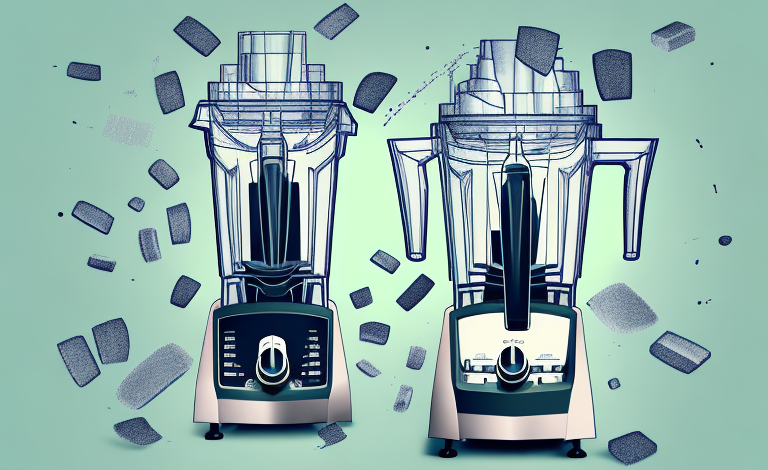Coffee enthusiasts and professionals alike know that coffee flavor can be affected by a variety of factors, including bean type, roast level, water temperature, and brewing method. However, one often overlooked aspect that significantly impacts the taste of coffee is grind size. In this article, we will explore the science behind how grind size affects coffee flavor, the different types of grinders available, and the impact of grind size on various brewing methods.
The science behind how coffee flavor is affected by grind size
When coffee is brewed, water extracts flavor compounds from the coffee grounds. The surface area of the coffee grounds determines how much of these compounds can be extracted. This means that if the surface area of the coffee grounds is too large, over-extraction of bitter and astringent flavors can occur, resulting in a harsh taste. On the other hand, if the surface area is too small, under-extraction can occur, resulting in a weak and insipid flavor.
The grind size of coffee also affects the rate at which water flows through the grounds during brewing, which can affect the amount of time that the coffee is in contact with water. This, in turn, affects the balance of flavors extracted from the coffee.
Additionally, the grind size can also impact the brewing method used. For example, a coarser grind is typically used for French press brewing, while a finer grind is used for espresso. This is because different brewing methods require different levels of extraction and contact time between the coffee and water. Understanding the appropriate grind size for each brewing method can help achieve the desired flavor profile for the coffee.
Understanding the different types of coffee grinders
There are two main types of coffee grinders: blade grinders and burr grinders. Blade grinders use a spinning blade to chop the coffee beans, which can result in an inconsistent grind with lots of fine particles, leading to inconsistent extraction. Burr grinders, on the other hand, use two revolving abrasive surfaces to crush the coffee beans. This method results in a more consistent grind size, which can lead to a more balanced and complex flavor profile.
It’s important to note that within the category of burr grinders, there are two subtypes: conical burr grinders and flat burr grinders. Conical burr grinders have a cone-shaped burr that sits inside a hollowed-out conical ring. This design allows for a slower and more precise grind, which can result in a more flavorful cup of coffee. Flat burr grinders, on the other hand, have two flat, parallel burrs that grind the beans. This design can result in a faster grind, but may not be as precise as a conical burr grinder. Ultimately, the type of coffee grinder you choose will depend on your personal preferences and brewing method.
The role of surface area in coffee extraction
As we mentioned earlier, the surface area of coffee grounds determines how much flavor can be extracted from them. The larger the surface area, the more flavor compounds will be extracted. This is why finer grinds are typically used for methods such as espresso, where a high extraction rate is desired. For methods such as French press or cold brew, where a longer brew time is required, coarser grinds are used to prevent over-extraction.
Another factor that affects coffee extraction is the water temperature. Hot water extracts more flavor compounds from the coffee grounds than cold water. However, if the water is too hot, it can lead to over-extraction and a bitter taste. This is why it’s important to use water that is between 195-205°F (90-96°C) for optimal extraction.
The type of coffee bean also plays a role in extraction. Different varieties of coffee beans have different levels of solubility, which affects how much flavor can be extracted. For example, Robusta beans have a higher solubility than Arabica beans, which means they can be extracted more easily. However, Arabica beans are often preferred for their more complex and nuanced flavors.
How to measure and adjust your coffee grind size
Measuring coffee grind size can be done using a coffee grinder with adjustable settings, or with a manual grinder that has a fixed setting. Generally speaking, the finer the grind, the longer the brew time and the more bitter and acidic the coffee will taste. Adjusting the grind size requires experimentation and a willingness to tweak the variables until the desired taste is achieved.
One important factor to consider when adjusting your coffee grind size is the brewing method you are using. Different brewing methods require different grind sizes to achieve optimal flavor. For example, a French press requires a coarser grind, while an espresso machine requires a very fine grind.
Another factor to consider is the freshness of your coffee beans. Freshly roasted beans will require a coarser grind than older beans, as they release more gas during the brewing process. It’s important to experiment with different grind sizes and brewing methods to find the perfect combination for your taste preferences.
The impact of grind size on different brewing methods
Each brewing method has a specific grind size that is recommended to achieve the best flavor profile. For example, espresso requires a fine grind to extract the maximum amount of flavor in a short amount of time. In contrast, a pour-over filter coffee requires a medium-fine grind to balance extraction and clarity of flavor.
French press coffee, on the other hand, requires a coarse grind to prevent over-extraction and bitterness. The larger grind size allows for a slower extraction process, resulting in a smoother and less bitter cup of coffee.
It’s important to note that the recommended grind size can also vary depending on the type of coffee bean being used. For example, a darker roast may require a slightly coarser grind to prevent over-extraction and bitterness, while a lighter roast may require a slightly finer grind to extract enough flavor.
Tips for achieving the perfect grind for your preferred brewing method
The key to achieving the perfect grind for your preferred brewing method is experimentation. Start with the recommended grind size for your method and adjust that up or down slightly until you find the sweet spot that produces the flavor you like. Other tips include using high-quality coffee beans, keeping your grinder clean, and measuring your coffee dose to keep it consistent.
Another important factor to consider when grinding your coffee is the type of grinder you use. Blade grinders can produce inconsistent particle sizes, which can lead to uneven extraction and a less-than-perfect cup of coffee. Burr grinders, on the other hand, produce a more uniform grind, which can result in a better-tasting cup of coffee.
It’s also important to consider the freshness of your coffee beans. Coffee beans start to lose their flavor and aroma shortly after they are roasted, so it’s best to grind your beans just before brewing. If you buy pre-ground coffee, it’s likely that the beans were ground weeks or even months ago, which can result in a stale-tasting cup of coffee.
Common mistakes to avoid when grinding coffee
One of the most common mistakes when grinding coffee is not adjusting your grind size for your brewing method. Another mistake is using a dirty grinder, which can contaminate your coffee with old coffee oils and flavors. Finally, it’s essential to use the right grind size for the type of coffee machine you’re using; for example, using a fine grind in a drip coffee maker can result in a bitter taste.
Another mistake to avoid when grinding coffee is using dull blades or burrs. Over time, the blades or burrs in your grinder can become dull, resulting in an inconsistent grind size and a less flavorful cup of coffee. It’s important to regularly clean and sharpen your grinder blades or burrs to ensure a consistent and high-quality grind.
Exploring the correlation between grind size and acidity in coffee
Another factor that can be affected by grind size is the acidity of the coffee. Finer grinds tend to produce a more acidic taste, while coarser grinds tend to reduce acidity. However, the amount of acidity in coffee can also be affected by factors such as roast level and bean origin.
Roast level plays a significant role in determining the acidity of coffee. Lighter roasts tend to have a higher acidity level, while darker roasts have a lower acidity level. This is because the longer roasting time breaks down the acids in the coffee beans, resulting in a less acidic taste.
Bean origin is another factor that can affect the acidity of coffee. Coffees grown at higher altitudes tend to have a higher acidity level, while those grown at lower altitudes have a lower acidity level. This is because the cooler temperatures at higher altitudes slow down the ripening process, resulting in a higher concentration of acids in the beans.
How temperature and humidity affect your coffee grind size
The temperature and humidity of your environment can affect your coffee grind size by causing it to clump together or become static. To prevent this, it’s essential to keep your coffee grinder and coffee beans in a cool, dry place to maintain consistent grind size.
Additionally, high humidity can also cause your coffee beans to absorb moisture, which can affect the flavor of your coffee. This is because moisture can cause the oils in the coffee beans to break down, resulting in a less flavorful cup of coffee. To avoid this, it’s best to store your coffee beans in an airtight container in a cool, dry place.
On the other hand, if the temperature is too low, your coffee beans may become too hard, making it difficult to grind them properly. This can result in an uneven grind size, which can affect the taste of your coffee. To avoid this, it’s important to let your coffee beans come to room temperature before grinding them.
Fine vs coarse grinds: Which is better for different types of coffee drinks?
Fine grinds are generally better for coffee drinks such as espresso, Turkish coffee, and Moka pots. Coarse grinds are better for methods such as French press, cold brew, and drip coffee. However, personal preference plays a significant role in the type of grind used for each method, making experimentation key to finding your ideal grind.
The importance of investing in a high-quality grinder for better flavor outcomes
A high-quality grinder is an investment that pays off in better flavor outcomes. Burr grinders, in particular, are recommended for their ability to produce a consistent grind size, resulting in a more balanced and complex flavor profile. Investing in a grinder that allows you to adjust the grind size for different brewing methods can also enhance the flavor of your coffee and give you more control over the brewing process.
In conclusion, grind size does indeed affect coffee flavor, and it’s critical to understand the different factors that can impact it to achieve the best-tasting coffee possible. By experimenting with different grind sizes and brewing methods and investing in a high-quality grinder, you can unlock a world of complex and delicious coffee flavor profiles.



